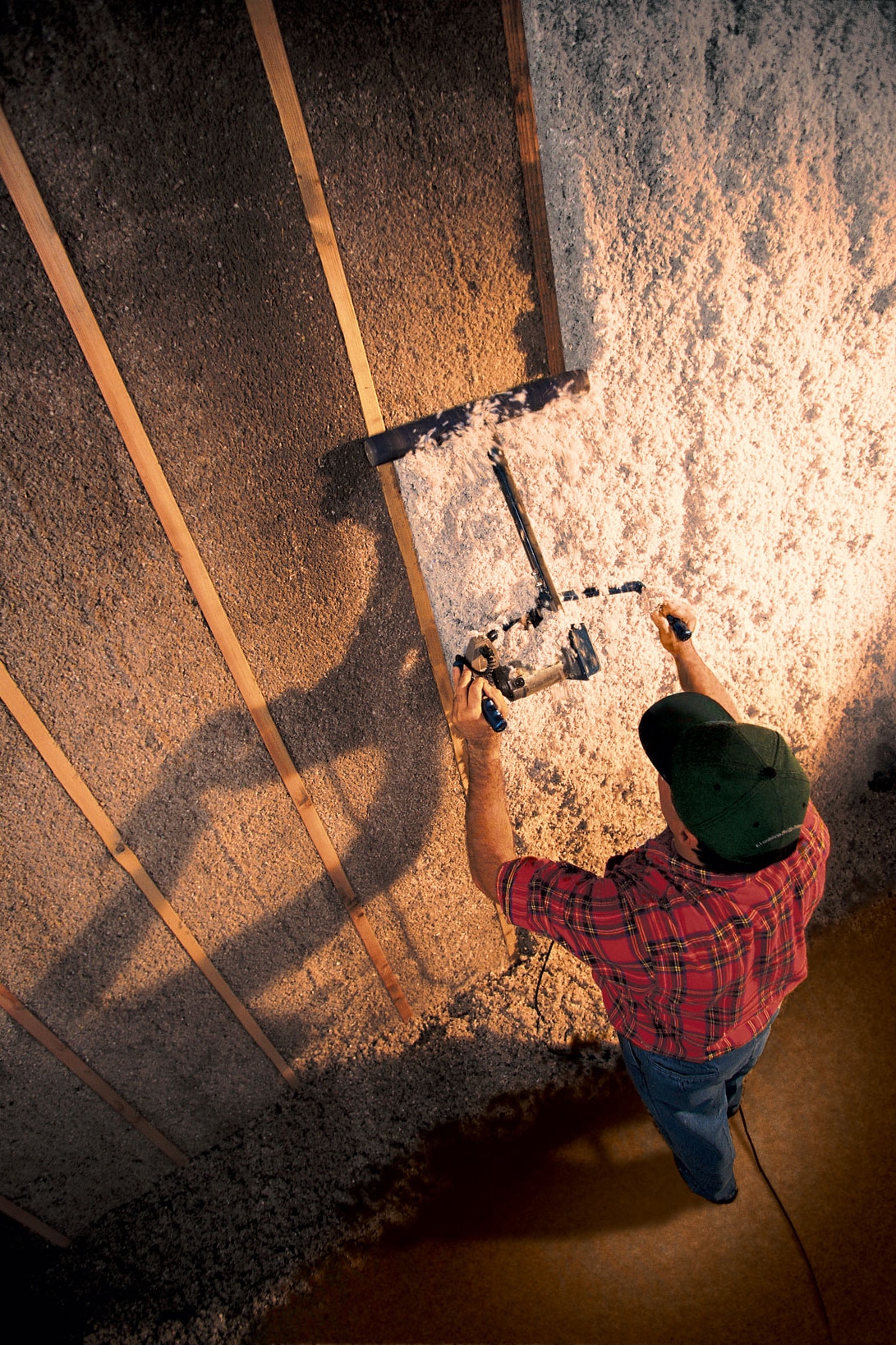More than ever before, our buildings, particularly our homes, have been stripped of their comfort. Once retreats where we relaxed, slept, and entertained, homes have now become the hub for every aspect of our lives—work, study, play, exercise, creativity, and more.
When you consider that about 80 to 90% of our health is dependent on factors beyond our physical health—our environment and social and economic factors, for instance—it’s not hard to see why this change at home has caused a dip in health and wellness.
We all play a part in creating wellness-centered homes and buildings. As an insulation company, we at Greenfiber feel that our role is to transform houses into sanctuaries by bringing more peace, quiet, and comfort through a home’s walls.
Here are five reasons to consider wall insulation as a touchpoint to increased wellness.
1. Soundproof walls lead to improved health.
When thinking of sound management, you might not think of health savings, yet $3.9 billion could be saved treating heart diseases alone by lowering environmental noise by 5 decibels. Well-built, soundproof walls create quiet environments that promote better health and less stress.
Sleep in particular is a cornerstone of good health. Insufficient Zs have been linked to health issues like obesity, diabetes, and heart disease. But sleep is also easily compromised by noise pollution. A noisy home will drastically impact sleep quality, which can in turn have an impact on your health. Soundproofing walls using densely packed insulation, as with Greenfiber’s SANCTUARY Blow-In or Spray-Applied Insulation, can offer the peace and quiet needed to get good rest.
In addition to the reduced sleep, increased stress, and general health issues adults suffer as a result of noise exposure, noise can also have a serious effect on a child’s ability to absorb, process, and recall information. Noise exposure has been linked to poorer reading comprehension, standardized test scores, and long-term memory.
By reducing the noise power in our homes, we can not only provide a better learning environment for our kids but also provide a peaceful space for them to grow into healthy adults.
2. Wall insulation can normalize temperatures and help regulate the body.
When the temperature inside your home is equalized, your body doesn’t need to adjust as you move from one room to the next. Not having to react as you move through your home means your body will more easily reach and maintain a relaxed state of equilibrium.
In addition to sound reduction, densely packed insulation excels at providing equalizing temperatures both in conventional built assemblies as well as in deeper walls found in net-zero and passive house homes.
Not only do such walls increase comfort and indoor temperature stability, but they can also be installed cost effectively. Deeper, high-mass walls work well in heating climates and excel in cooling climates as well. They also future-proof our homes with a very low environmental impact.
Densely packed insulation also helps to address unwanted air flow. New construction often features a high level of detail when it comes to controlling air flow, and insulation that adds a second line of defense can aid in that.

Photo courtesy of Greenfiber
3. Well-built walls create superior indoor air quality (IAQ).
Americans spend 90% of their time indoors, where the concentrations of some pollutants can be two to five times higher than outdoor concentrations. While air infiltration is an essential part of indoor IAQ, you still have to consider that most of the pollutants affecting indoor air quality come from sources inside buildings, including cooking appliances and fireplaces, cleaning supplies, paints, insecticides, and building materials.
Constructing walls with materials without formaldehydes, VOCs, or other Red List chemicals, like SANCTUARY, creates better air to breathe for you and the environment.
4. Wall insulation with moisture and fire barriers give peace of mind.
Fire and water have their place in your home—just not in the walls. Having a one-hour exterior firewall has great benefits for safety and provides peace of mind. Greenfiber has also invested the time and research into producing two- and three-hour systems for party walls and shaft liners. These systems are installed with the same insulation contractor working on the rest of the building.
Bringing together materials to manage moisture from the exterior and interior is important, and its success supports good IAQ. Greenfiber insulation can manage moisture issues since it has the ability to take on, diffuse, and dissipate moisture over time. The borates used to provide fire-resistance also inhibit mold growth, and in the instance where there is an envelope failure can also mitigate structural damage.
Sometimes humidity issues can still crop up in homes, often due to unwanted air flow and the clash of temperatures and dew points. A well-detailed envelope that includes air-sealing benefits from a safe, nontoxic insulation product that resists airflow can help prevent that.
5. Wall insulation can be good for the environment, too.
We and our buildings are connected to the environment we build in. Leveraging alternative energy sources reduces our carbon footprint, but what is often overlooked are the material choices and environmental costs in manufacturing those materials.
Greenfiber uses a low-energy manufacturing process that results in materials with the least-embodied energy of most major insulation products. The production process generates little no waste or byproducts because we leverage recovered material to start with. Our product starts as a plant material, is made into paper, and reused as insulation. Greenfiber uses upcycled paper and has diverted approximately 160,000 tons from landfills. Each ton of recycled paper can save 17 trees, which means we have saved 2.72 million trees to date.
We also use electric-driven machines and manage the exhaust and byproducts from our facilities, and there is no energy-intensive melting of materials in spaces that must run 24 hours a day.
It’s clear buildings are complex with a myriad of tasks, skills, components, and people needed to bring them together. Greenfiber is doing its part to create an ideal environment at home with SANCTUARY.
Regardless of a certification or standard, the common denominator in our buildings should always be people. We should be designing and building for us. As public and environmental health expert Richard Jackson reminds us, “The built environment is the embodiment of what we love, our imagination, and our will. It is what we value and reflects what and whom we care about.”




